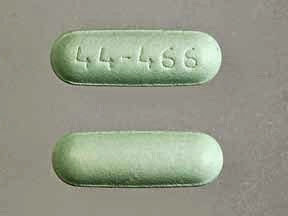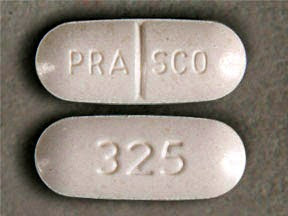PHENYLEPHRINE OPHTHALMIC
(fen ill EFF rin) Brand: AK-Dilate, AK-Nefrin, Isopto Frin, Mydfrin, Neo-Synephrine Ophthalmic, Neofrin









What is the most significant information I must know about phenylephrine ophthalmic?
• Do not touch the dropper to any surface, including the eyes or hands. The dropper is sterile. If it becomes contaminated, it could reason an infection in the eye.
• If you wear contact lenses, remove them till applying phenylephrine ophthalmic. Ask your doctor if contact lenses can be reinserted after application of the medicine. Phenylephrine ophthalmic may contains preservative (benzalkonium chloride), which may reason discoloration of contact lenses.
• Do not use phenylephrine ophthalmic more often or continuously for longer than 48 to 72 hours without consulting a doctor. Chronic use of this medicine may hurt the blood vessels (veins and arteries) in the eyes. Consult a doctor if your symptoms do not improve or appear to worsen.
• Use caution when driving, operating machinery, or performing another hazardous activities. Phenylephrine ophthalmic may reason blurred vision. If you experience blurred vision, avoid these activities.
What is phenylephrine ophthalmic?
• Phenylephrine ophthalmic causes constriction of blood vessels in the eyes. It also enlarges the pupils, reduces the manufacture of fluid in the eyes, and increases the amount of fluid that drains from the eyes.
• Phenylephrine ophthalmic accessible over-the-counter is used to relieve redness, burning, irritation, and dryness of the eye caused by wind, sun, and another minor irritants. Prescription-strength phenylephrine ophthalmic is used to constrict blood vessels in the eye and to dilate (make bigger) the pupil for conditions such as glaucoma, till surgery, and till eye examinations.
• Phenylephrine ophthalmic may also be used for purposes another than those listed in this medicine guide.
What must I discuss with my healthcare provider till using phenylephrine ophthalmic?
• Do not use phenylephrine ophthalmic if you have glaucoma, except under the supervision of your doctor.
• Do not use phenylephrine ophthalmic after eye surgery, if you have an eye infection, if you have an eye injury, or if you have a problem with the usual tearing of your eyes without the approval and direction of your doctor. Using phenylephrine ophthalmic under these circumstances could lead to absorption of the drug by the body, and side effects could affect the heart.
• Till using this medicine, speak your doctor if you
· have any type of heart condition, including tall blood pressure;
· take any medicines to treat a heart condition;
· have asthma;
· have diabetes; or
· have thyroid problems.
• You may not be able to use phenylephrine ophthalmic, or you may require a dosage adjustment or particular monitoring during treatment if you have any of the conditions listed above.
• Phenylephrine ophthalmic is in the FDA pregnancy category C. This means that it is not known whether phenylephrine ophthalmic will be deleterious to an unborn child. Do not use this medicine without first talking to your doctor if you are pregnant or could become pregnant during treatment.
• It is not known whether phenylephrine ophthalmic passes into breast milk. Do not use phenylephrine ophthalmic without first talking to your doctor if you are breast-feeding a baby.
How must I use phenylephrine ophthalmic?
• Use phenylephrine eyedrops exactly as directed by your doctor, or follow the directions that accompany the package. If you do not understand these instructions, ask your doctor, pharmacist, or nurse to explain them to you.
• Wash your hands till and after using the eyedrops.
• If you wear contact lenses, remove them till applying phenylephrine ophthalmic. Ask your doctor if contact lenses can be reinserted after application of the medicine. Phenylephrine ophthalmic may contain a preservative (benzalkonium chloride), which may reason discoloration of contact lenses.
• To apply the eyedrops:
· Tilt the head back slightly and pull down on the lower eyelid. Position the dropper above the eye. Look up and away from the dropper. Squeeze out a drop and close the eye. Apply gentle pressure to the internal corner of the eye (near the nose) for about 1 minute to prevent the liquid from draining down the tear duct. Repeat the process in the another eye if needed.
• Do not use phenylephrine ophthalmic more often or continuously for longer than 48 to 72 hours without consulting a doctor. Chronic use of this medicine may hurt the blood vessels (veins and arteries) in the eyes. Consult a doctor if your symptoms do not improve or appear to worsen.
• Do not touch the dropper to any surface, including the eyes or hands. The dropper is sterile. If it becomes contaminated, it could reason an infection in the eye.
• Do not use any eyedrop that is discolored or has particles in it.
• Store phenylephrine ophthalmic at room temperature away from moisture and heat. Hold the bottle properly capped.
What happens if I miss a dose?
• Apply the missed doze as soon as you remember. However, if it is nearly time for the following regularly scheduled doze, skip the missed doze and apply the following one as directed. Do not use a double doze of this medication.
What happens if I overdose?
• An overdose of this medicine is unlikely to be deleterious. If you do suspect an overdose, or if the drops have been ingested (taken by mouth), contact an abnormal room or poison control center for advice.
What must I avoid while using phenylephrine ophthalmic?
• Use caution when driving, operating machinery, or performing another hazardous activities. Phenylephrine ophthalmic may reason blurred vision. If you experience blurred vision, avoid these activities.
• Do not touch the dropper to any surface, including the eyes or hands. The dropper is sterile. If it becomes contaminated, it could reason an infection in the eye.
• If you wear contact lenses, remove them till applying phenylephrine ophthalmic. Ask your doctor if contact lenses can be reinserted after application of the medicine. Phenylephrine ophthalmic may contain a preservative (benzalkonium chloride), which may reason discoloration of contact lenses.
• Do not use phenylephrine ophthalmic more often or continuously for longer than 48 to 72 hours without consulting a doctor. Chronic use of this medicine may hurt the blood vessels (veins and arteries) in the eyes. Consult a doctor if your symptoms do not improve or appear to worsen.
What are the possible side effects of phenylephrine ophthalmic?
• If you experience any of the next serious side effects, stop using phenylephrine ophthalmic and search abnormal medical attention or contact your doctor immediately:
· an allergic reaction (difficulty breathing; closing of the throat; swelling of the lips, person, or tongue; or hives);
· an irregular or quick heart course; or
· tall blood pressure (severe headache, blurred vision, or flushed skin).
• Another, smaller serious side effects may be more likely to occur. Continue to use phenylephrine ophthalmic and conversation to your doctor if you experience
· burning, stinging, pain, or heighten redness of the eye;
· tearing or blurred vision;
· headache;
· tremor;
· nausea;
· sweating;
· nervousness;
· dizziness; or
· drowsiness.
• Side effects another than those listed here may also occur. Conversation to your doctor about any side effect that seems unusual or that is especially bothersome. You may message side effects to FDA at 1-800-FDA-1088.
What another drugs will affect phenylephrine ophthalmic?
• Do not use another eye medications during treatment with phenylephrine ophthalmic except under the direction of your doctor.
• Although drug interactions between phenylephrine ophthalmic and drugs taken by mouth are not expected, they can occur. Till using this medicine, speak your doctor if you are taking any of the next medicines:
· a monoamine oxidase inhibitor (MAOI) such as isocarboxazid (Marplan), tranylcypromine (Parnate), or phenelzine (Nardil); or
· a beta-blocker such as propranolol (Inderal), metoprolol (Lopressor, Toprol XL), or labetalol (Normodyne, Trandate).
• You may not be able to use phenylephrine ophthalmic, or you may require a dosage adjustment or particular monitoring during treatment if you are taking any of the medicines listed above.
• Drugs another than those listed here may also interact with phenylephrine ophthalmic. Conversation to your doctor and pharmacist till taking any prescription or over-the-counter medicines, including vitamins, minerals, and herbal products.
Where can I get more information?
• Your pharmacist has additional information about phenylephrine ophthalmic written for health professionals that you may read.
Remember, hold this and all another medicines out of the reach of children, never share your medicines with others, and use this medicine only for the indication prescribed.
Disclaim: Each effort has been made to ensure that the information provided by Cerner Multum, Inc. ('Multum') is accurate, up-to-date, and complete, but no guarantee is made to that effect. Drug information contained herein may be time sensitive. Multum information has been compiled for use by healthcare practitioners and consumers in the United States and therefore Multum does not warrant that uses external of the United States are appropriate, unless specifically indicated otherwise. Multum's drug information does not endorse drugs, diagnose patients or recommend therapy. Multum's drug information is an informational resource designed to assist licensed healthcare practitioners in caring for their patients and/or to serve consumers viewing this service as a supplement to, and not a substitute for, the expertise, skill, knowledge and judgment of healthcare practitioners. The absence of a warning for a given drug or drug combination in no way must be construed to indicate that the drug or drug combination is safety, effective or appropriate for any given patient. Multum does not assume any responsibility for any aspect of healthcare administered with the help of information Multum provides. The information contained herein is not intended to cover all possible uses, directions, precautions, warnings, drug interactions, allergic reactions, or adverse effects. If you have questions about the drugs you are taking, check with your doctor, nurse or pharmacist.